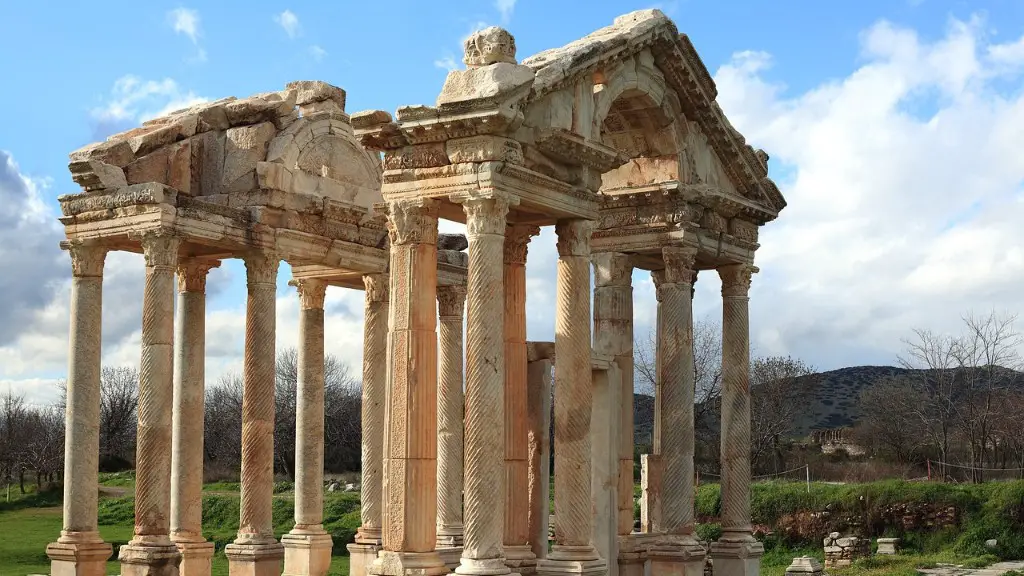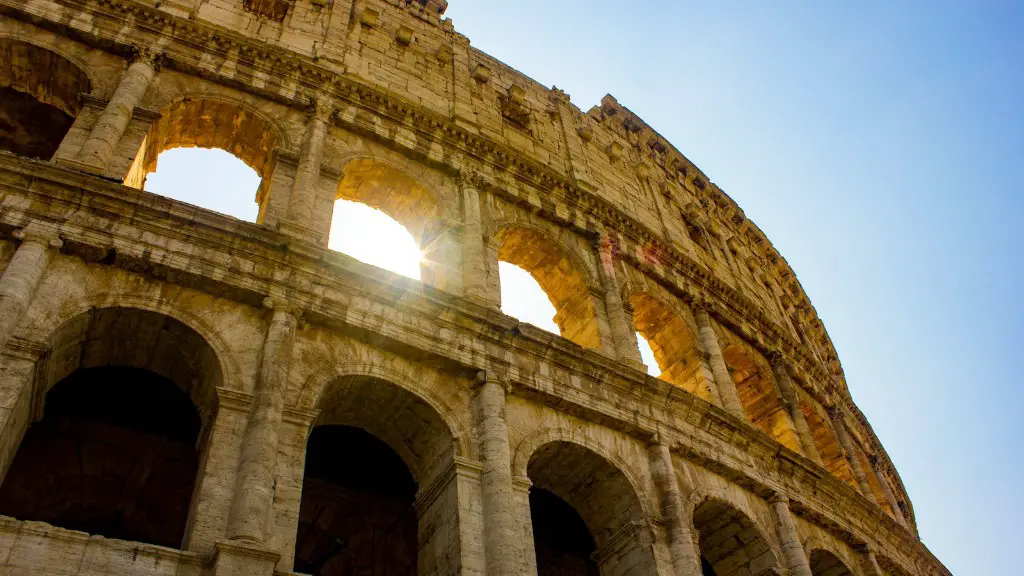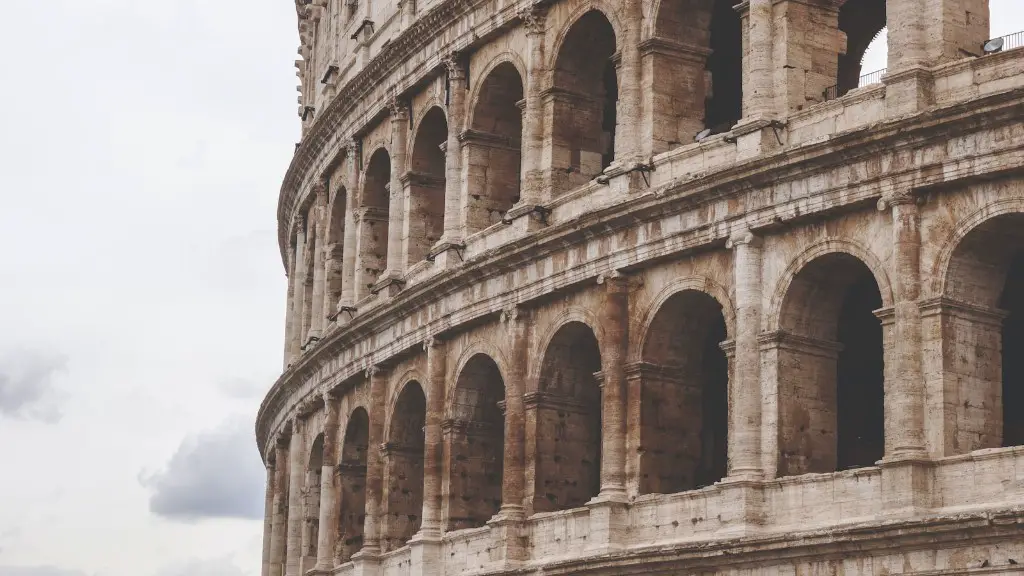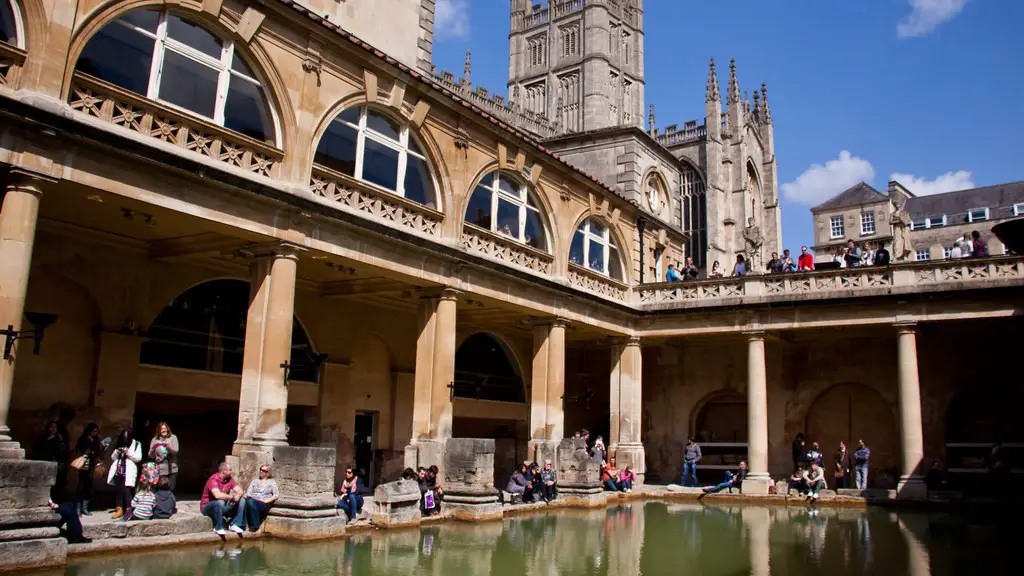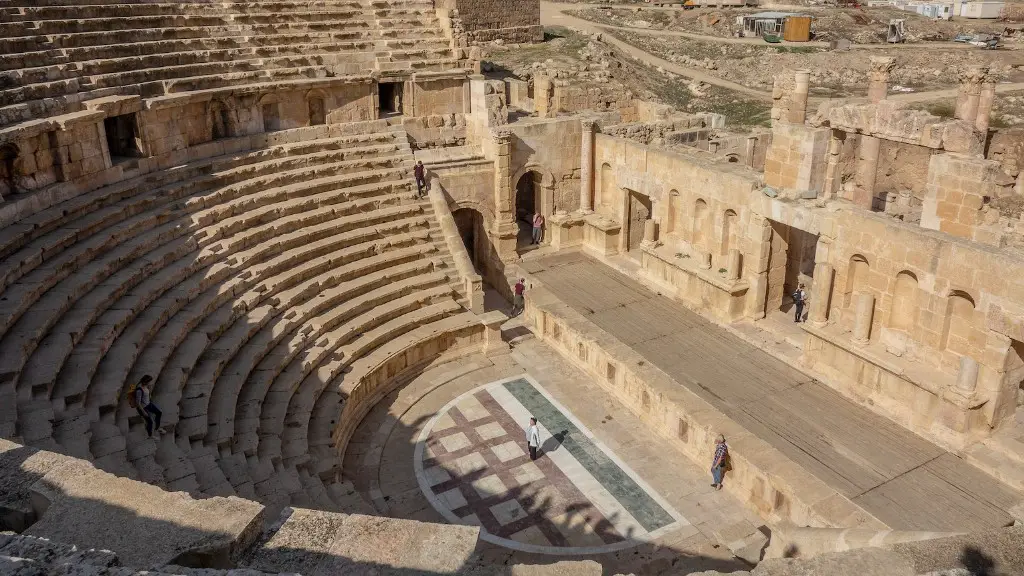Ancient Rome has a long and varied history and is known for its immense influence on Western civilization. This article seeks to answer the question, who was the last ruler of Ancient Rome?
Rome was initially ruled by kings from 753 BC until 509 BC when it was overthrown and replaced by the Roman Republic. The Roman Republic was then governed by two consuls who were popularly elected and held their position for one year. In 44 BC, Julius Caesar was appointed permanent dictator of Rome and this began the Roman Empire which lasted until 476 AD.
The Western Roman Empire, however, fell in the year 476 AD when Romulus Augustus, the last emperor of the Western Roman Empire was deposed by Odoacer, King of the Germanic Heruling Tribe. Odoacer was the first Barbarian king to rule over Italy and he is widely considered to be the last ruler of Ancient Rome.
Romulus Augustus was the son of the famous Emperor Flavius Orestes and was only 16 when he was deposed. His predecessor, his father, had managed to regain much of the power Rome had previously held but was unable to protect it from the Germans. Even though the Romans put up a strong defense, the Germanic tribes were relentless and eventually managed to defeat the Roman army.
Romulus Augustus was taken prisoner and sent to a monastery in Capua. He later became a monk himself and lived out the remainder of his days in peaceful devotion. It was said that he never used the title of emperor again or even acknowledged that he had ever held the title.
The fall of the Western Roman Empire was a pivotal moment in the history of Europe, as this signalled the beginning of the Middle Ages. Although the Roman Empire had slowly been declining since the beginning of the 5th century, it was the Germanic tribes who finally brought it to an end.
The legacy of Odoacer was a long and complicated one, as many would consider him one of the most influential figures in the history of Europe. He initiated the process which saw an end to classical Roman culture and by unifying the Germanic peoples, he enabled the development of modern-day Europe.
Impact on Art & Literature
The fall of Rome had a profound impact on art and literature in Europe. Immediately after Odoacer’s reign, Classical Latin poetry, which had been popular in the Roman Empire, came to an abrupt end. This meant that the Latin language itself became much more simplified, almost to the point of being unrecognizable.
Much of what we consider to be the early foundations of European literature can be traced back to the post-Roman period. One of the most famous works of literature to emerge was the famous Epic of Gilgamesh, which was believed to have been written around 750-650 BC. This story was an important cultural influence to many early European societies and helped to shape their culture and beliefs.
The manuscripts of the time also reflect the changes that were taking place in the culture. For example, the Latin language began to give way to local dialects, which eventually evolved into the languages that are still spoken today.
The influence of Odoacer can also be seen in the art of the time, with a focus on abstraction and religious painting. For the first time in Europe, the church had a significant role in the production of art, and painters sought to portray Christian themes such as the crucifixion and resurrection of Jesus Christ.
This was a stark contrast to the art of the Roman Empire, which had been very focused on realism and the glorification of their state.
Preserving Roman Culture
The rise of Christianity in the post-Roman period also played an important role in preserving Roman culture. As the Roman Empire collapsed and its territories were taken over by the Germanic tribes, much of the culture was lost. However, the Church provided an important foundation for the preservation of some of the key aspects of Roman culture such as language and literature.
For example, the Church commissioned many of the works of Latin poetry which we still have today, as well as providing a platform for the emerging Greek-speaking Byzantines to express themselves without fear of persecution.
Christian scholars also helped to revive the study of Latin, which had almost disappeared in the post-Roman period. This allowed for the continuation of the Roman cultural legacy and a means of understanding their past.
Perhaps most importantly, the Church was a major force in supporting the rise of Western civilization – providing stability to what would otherwise have been a tumultuous period of transition.
Odoacer’s Legacy
Odoacer is remembered by many as the Last Ruler of Ancient Rome. But more than that, he is credited with initiating the process of transition from the Roman way of life to the more modern European one.
He managed to unite disparate Germanic tribes, paving the way for their integration into the European collective. He also provided an important bridge between classical Latin literature and new works that were beginning to emerge.
Finally, his most lasting legacy is the preservation of some of the key aspects of Roman culture and the way he supported the emergence of Christianity. His legacy will continue to be felt for years to come.
Aftermath of Responsible Power
After Odoacer stepped down from power, the balance of power in Europe began to shift and Europe would go on to experience a period of immense upheaval for another 500 years.
It is important to note that, despite the fact that Odoacer is often seen as the last ruler of Rome, his power was in no way absolute. He shared power with other leaders of the Germanic group and there were other smaller, independent states in the region during this period.
It is likely that, without Odoacer, the political landscape of Europe would have been much different. He was an important figure in unifying the Germanic tribes and in beginning the process of their integration with the Roman Empire.
Odoacer’s reign also signaled the beginning of the end of the Roman Empire. The empire had been slowly crumbling since the beginning of the fifth century, but it was Odoacer’s rule that definitively ended it.
It is impossible to know for certain what the future of Europe would have looked like if Odoacer had not stepped in. What is certain, however, is that he has left behind a lasting legacy and is remembered as the Last Ruler of Ancient Rome.
Impact on Modern Day Europe
The lasting legacy of Odoacer and his reign continues to be felt today. The Europe of today is a product of more than 1500 years of history, much of which started with the fall of Rome and Odoacer’s rule.
His legacy is also seen in the various languages which are still spoken in Europe today, which are the result of the merging of the native languages with Latin, which was brought to the region by the Romans and preserved by the Church.
Odoacer’s rule also led to the rise of Christianity, which, along with the Roman Empire, has been a major influence on European culture for centuries.
Finally, Odoacer’s reign led to a period of immense upheaval in Europe and marks an important moment in the continent’s history. His legacy will continue to be felt for centuries to come.
Conclusion
Odoacer is widely considered to be the last ruler of Ancient Rome and his reign marks a significant period in the history of Europe. Through his rule, Odoacer managed to unify the Germanic tribes and to begin the process of their integration into the Roman Empire, paving the way for the emergence of modern Europe. He also helped to preserve some of the aspects of Roman culture, notwithstanding the end of the Western Roman Empire. Odoacer’s legacy will continue to be felt for centuries to come.
